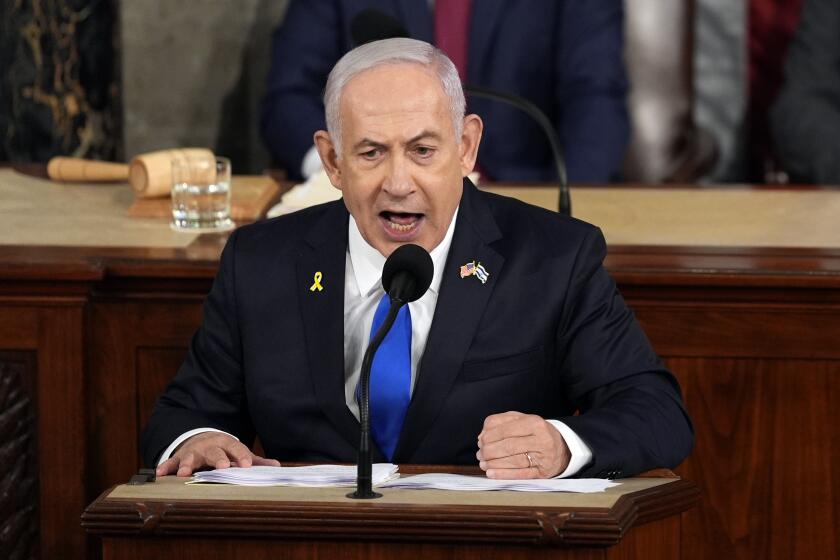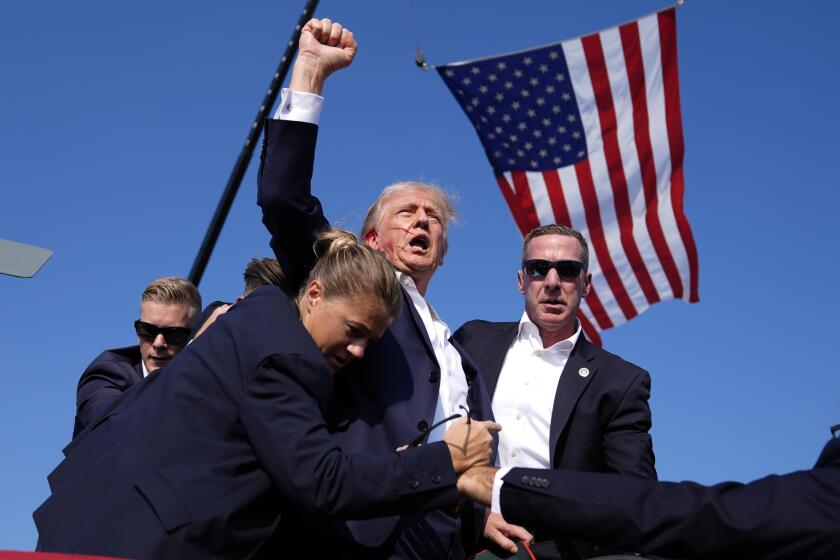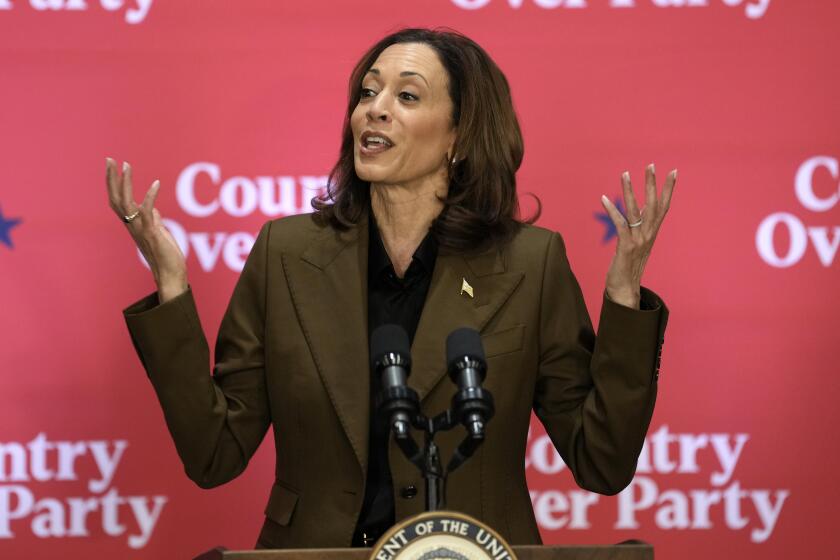Twins Joined at the Skull Are Separated
BALTIMORE — Seven-month-old Siamese twins, joined at the back of the head, were successfully separated Sunday in a 22-hour operation by doctors at the Johns Hopkins Medical Institutions.
Surgeons plunged the West German infants into a temporary state of suspended animation to halt their bleeding.
Doctors said it was the first time hypothermia--deliberately lowering the body’s temperature--had been attempted in such an operation. If both boys survive, it will also be the first time that twins sharing major blood systems in the brain have been successfully separated.
“We did everything humanly possible to bring this off,” said Dr. Ben Carson, director of pediatric neurosurgery. “Right now, they are in stable but critical condition. The rest of it is up to God.” He said it would be days before doctors will have any sense of whether either boy would recover and live a normal life.
But Johns Hopkins officials said Sunday that they would not have proceeded with the operation unless the possibility existed for both boys to survive and prosper.
“They were attached in such a way that they had no real prospect to live a normal life,” said Dr. Mark Rogers, director of pediatric intensive care. “They would never crawl, never sit or walk or turn. We offered them the best hope of living and growing.”
He said that the boys’ parents, Josef and Theresia Binder of Ulm, West Germany, had been consulted repeatedly and that even on the morning of the operation they were asked if they wished to reconsider.
The operation, which began at 7:15 a.m. Saturday and was finished at 5:10 a.m. Sunday, involved a team of more than 70 doctors and nurses. The boys, Benjamin and Patrick Binder, shared the major veins and blood draining system directly behind their brains.
Separate Brains
Other than that, however, both boys were healthy, with separate brains and other vital functions that were all in good condition.
Doctors had to keep the twins’ hearts from pumping blood for an hour while they constructed two new sagittal superior sinus veins from the one they had in common.
In order to do that, doctors slowly removed the blood from the boys’ bodies and, with the help of a heart-lung machine, stopped their hearts and lowered their body temperatures from a normal 37 degrees Centigrade to just below 20 degrees.
The operation required enormous coordination of teams of heart doctors, brain surgeons, plastic surgeons, anesthesiologists and many others, often with separate teams working on each boy. But hypothermia was the crucial element in its success.
“If we were to open those sinuses (blood channels) with normal heart flow to the brain,” said Dr. Donlin Long, director of neurosurgery, “children of that size would be dead in a minute.”
Fewer Metabolic Needs
The technique has become nearly routine when operating on infants with major heart defects, but it has not been used this way before. At lower temperatures with less blood in the body--a minute amount remains--the organs have fewer metabolic needs. When doctors need to interrupt the flow of blood to an organ, they can protect it for a greater period of time by lowering the body temperature.
The amount of time surgeons buy is directly related to how low the temperature in the body can go.
Nevertheless, doctors had to work quickly because after about an hour the body cells begin to die from lack of oxygen. The surgeons completed the new vein in one of the twins in 57 minutes and took 63 minutes for the other.
“It got pretty intense in there,” said Dr. Bruce Reitz, director of cardiac surgery. “We tried not to look at the clock.”
At least five months’ worth of planning went into the effort. Special implants were made in the boys’ skulls to stretch their skin so that when the operation was finished there would be enough to cover their separate skulls.
Computer Sculptures
Using new CAT-scan equipment, the doctors made highly accurate three-dimensional sculptures of the boys’ heads, generated by computer, well in advance of the operation.
An entire operating theater had to be rewired for the intricately choreographed surgery, and doctors carried out dress rehearsals on dolls whose heads were stuck together with Velcro.
Surgeons had planned to cover the boys’ brains with titanium to protect them until their skulls could grow over, but there was so much swelling that they decided to postpone that part of the operation.
The Hopkins team met throughout the summer to sketch their plan of attack. At first they intended to use some artificial material to create two new sinuses in the boys’ brains, but they settled on taking a small part of the pericardium, the heart’s covering, to graft new blood vessels.
When the last thin vein joining the boys was severed, the surgeons gently swung apart the specially hinged operating table and created two separate teams.
‘Remarkable Feeling’
“I don’t think I’ve ever had a more exciting moment in my life than that one,” said Rogers, describing the eerie silence that fell on the room when for the first time there were two independent children. “It was a remarkable feeling.”
The boys required transfusions of more than 60 units of blood during the surgery.
Doctors said that further bleeding, postoperative infections and swelling of the brains will be their greatest risks in the coming days.
Both have been put into an artificial coma with drugs so doctors can more carefully control their condition. They may remain in that state for up to a week, doctors said.
Siamese twins occur once in every 70,000 to 100,000 live births, doctors said. Twins are joined at the head approximately once in every 2 million live births. Siamese twins form when a single fertilized egg fails to divide completely.
Hopkins officials said they could not estimate the cost of the operation but it would be “hundreds of thousands of dollars.”
More to Read
Sign up for Essential California
The most important California stories and recommendations in your inbox every morning.
You may occasionally receive promotional content from the Los Angeles Times.










